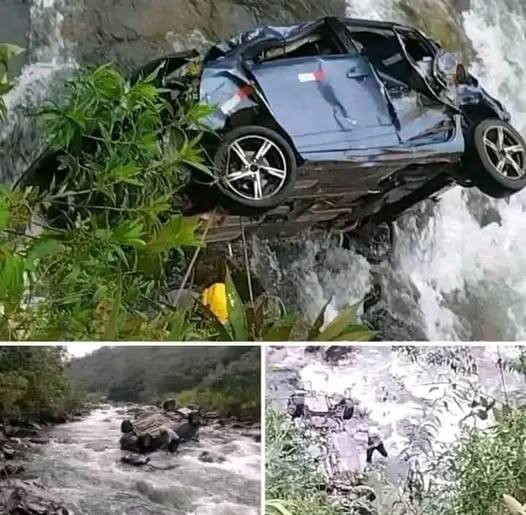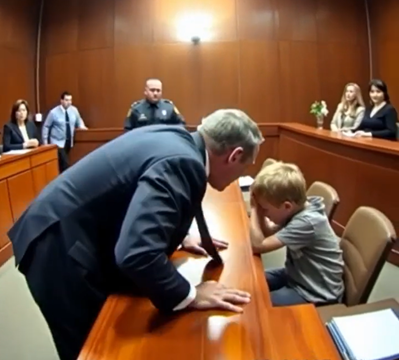In Santiago, Chile, a shocking accident unfolded in the early hours of Sunday morning that once again brought national attention to the dangers of drunk driving. At around 2:30 a.m., a car traveling at dangerously high speed lost control at the intersection of Avenida Costanera Norte and Puente Purísima, crashed through the safety barriers, and plunged directly into the Mapocho River from a height of nearly six meters.

The scene was chaotic and terrifying, leaving bystanders in disbelief. Witnesses later described how the vehicle had been zigzagging along the road before suddenly veering off course and falling into the river, an event one night worker compared to “something out of a movie.” What makes the incident all the more alarming is that the driver, identified as 28-year-old Matías C., was under the influence of alcohol at the time. Despite the violent crash, he managed to free himself from the wreckage and swim to the riverbank, where emergency responders found him with multiple minor injuries but conscious and responsive.
He was immediately transported to the University of Chile Clinical Hospital, where he was stabilized. However, the relief of his survival was quickly overshadowed by the results of his medical evaluation. A breathalyzer test revealed that he had 1.3 grams of alcohol per liter of blood, confirming he had been driving while intoxicated. This revelation sparked outrage both locally and online, where social media users expressed their anger at the driver’s recklessness. Comments flooded in, with many calling the event not an accident but the predictable result of irresponsible behavior, pointing out that his actions could easily have cost innocent lives. Luckily, because the crash occurred at such an early hour, no other vehicles or pedestrians were harmed.
Authorities emphasized that this section of Costanera Norte is already known as a hotspot for speeding, and Carabineros Commander Pablo Álvarez publicly stated that the accident underscored the ongoing challenge of persuading some drivers to take road safety seriously. “We have repeatedly called for responsible driving,” he said, “but incidents like this show that there are still people who don’t understand the dangers of drunk driving.” The damaged vehicle was eventually removed from the river after an hours-long operation that required specialized heavy machinery, and municipal workers began immediate evaluations of the bridge’s safety railing, which sustained significant damage in the crash.
Beyond the physical damage, the driver is now facing legal repercussions. On Monday, the court charged Matías C. with drunk driving and destruction of public property, placing him under overnight house arrest, suspending his driver’s license provisionally, and requiring him to report monthly while the investigation continues. Authorities also signaled that if evidence emerges of repeat offenses or a history of similar dangerous behavior, the charges could be upgraded to reflect the seriousness of his actions. The case serves as yet another grim reminder of Chile’s ongoing battle with drunk driving, one of the primary causes of deadly accidents in the country.
Year after year, countless families are devastated by crashes caused by impaired drivers, despite persistent awareness campaigns and stricter penalties. Officials have reiterated their calls for responsibility, reminding citizens that no excuse justifies getting behind the wheel after drinking. “If you’re going to drink, don’t drive,” authorities urged, highlighting that reckless decisions like the one made by Matías C. not only endanger the driver but put the lives of countless others at risk.
The Mapocho River crash may not have ended in fatalities this time, but the damage done to public property, the resources required for rescue and recovery, and the national outrage it provoked stand as proof of how costly and destructive drunk driving continues to be. As investigations proceed, the story serves both as a warning and a call to action—underscoring that until every driver takes responsibility, tragedies like this will remain a haunting reality on Chile’s roads.





